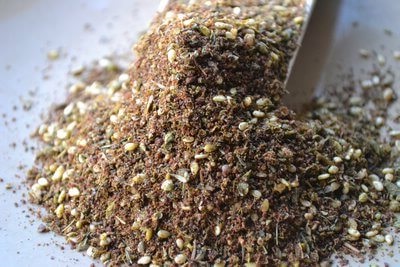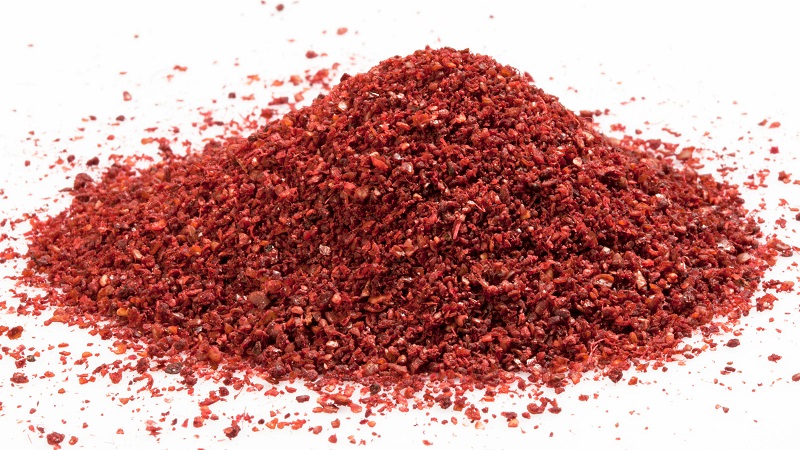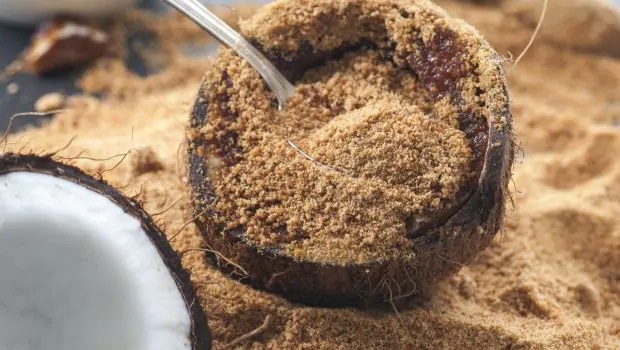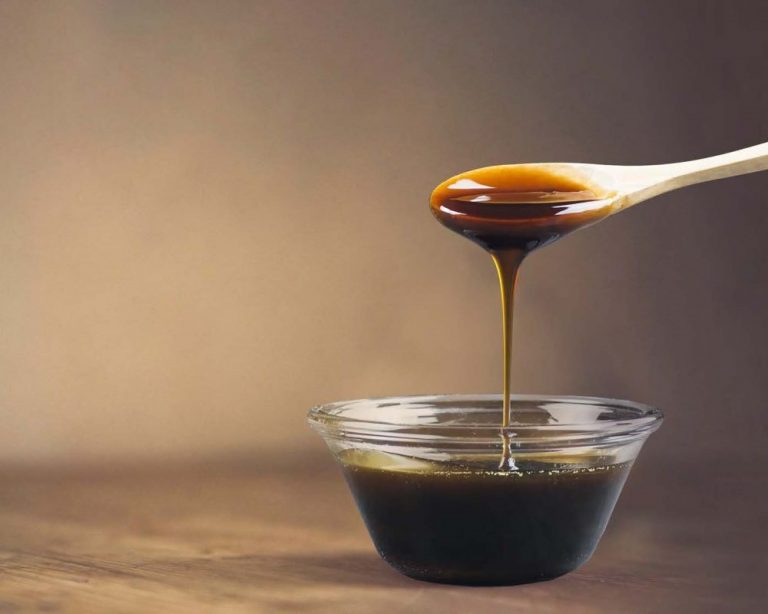Sumac Substitute – 15 Best Alternatives Ready for Replacement in Cooking
Don’t have sumac to add to your recipe, or your recipe requires sumac and you’re all out. Don’t worry, as we reveal several great sumac substitutes in this guide. To find out more, keep reading.
Spices are certainly one of the key ingredients we use in our dishes. No meal is that yummy without correct seasoning. So whether you are making a nice meal, salad dressing or simply making a salad, spices will make your meal tastier and richer.
Sumac is a vibrant red spice made from the dried fruit of certain species of sumac trees. Sumac is a bright red spice commonly found in Middle Eastern and Mediterranean areas. It has a sour, fruity taste and is used in various dishes. There are hundreds of sumac berries, but only a few are edible, including Staghorn Sumac, Smooth Sumac, Evergreen Sumac, and Fragrant Sumac.
There is also Chinese sumac, which has a slightly different flavor and is used in dishes like stir-fry. Sumac can also be used as a spice to add tartness to dishes. Next, there’s lemon sumac, which has a lemony taste and is used in salads and marinades. Finally, The most popular one is the ground sumac, used to make the spice.
Best Sumac Substitute
Sumac is a popular spice that has a sour and fruity taste. It is used in various dishes but can be challenging to find in some areas. If you cannot find sumac or do not want to spend the money on it, there are several quick and easy-to-find alternatives you can use. These substitutes will not have the same flavor as sumac, but they will add a similar tartness to your dish.
Lemon Zest
Lemon zest is the yellow outer part of the lemon’s skin. It has a strong tart flavor and is used in cooking to add flavor to food.
Lemon Zest is the outermost skin of a lemon, which is used for its flavor. Depending on the desired effect, it can be added to food either with or without lemon juice. For example, lemon zest can brighten up a dish and add a tangy flavor.
Lemon zest is a famous flavoring agent found in many grocery stores. It has a similar taste profile to lemon juice and adds flavor to food or drinks.
Lemon Juice
Lemon juice is a fruit drink made by blending lemons with water. It is often used as a mixer in cocktails or as a refreshing drink on its own.
Lemon is a tart and sour spice used as a replacement for sumac in many cases. It can be used in sweets, drinks, and as an enhancement for meat and fish dishes. Lemon juice has a fruity taste with a slightly bitter aftertaste, perfect for replacing sumac in recipes.
When it comes to alternatives for sumac, lemon juice should be used sparingly. Although it is a common ingredient in recipes, it has potent properties that can easily overpower a dish.
Vinegar
Vinegar is a sour liquid that is made from the fermentation of ethanol. It has a high acetic acid content and is used in cooking, cleaning, and medical purposes.
It should be noted that sumac is not a necessary ingredient for making tzatziki sauce or marinades. In fact, there are many substitutes for sumac including white vinegar, which does not have any medical advantage over apple juice like sumac does.
Sumac is a spice that has a sour, acidic taste. If you are looking for a substitute in dishes or vegetables, vinegar will help bring out that acidy flavor.
Smoked Paprika
Smoked paprika is made from peppers that have been smoked and dried over wooden fires. The peppers are then ground into a powder and used in various dishes for flavor.
There are three types of smoked paprika: Mild, Hot, and Medium-Hot. They all have a smoky and slightly sweet flavored taste. The difference is the level of heat that they provide.
There are a few substitutes for sumac if you can’t find it or don’t want to use it in your dish. Pimenton is smoked paprika with a similar flavor profile and will work well as a substitution. Another option is Spanish paprika, which isn’t smoked but does have a slightly different flavor than regular paprika. Lastly, you could also try using lemon juice or zest in your recipe- both will add a tartness that will complement the other flavors in your dish.
Sumac is a spice with a smoky, earthy flavor with a touch of sourness. It is commonly used in Middle Eastern cuisine, but its potential flavor profile is vast. This spice can be used to add depth and complexity to dishes like chicken or beef kebabs, tabouli salad, and even hummus. Although sumac is a unique and essential spice, it can be frustrating to track down. If you’re looking for a good alternative, smoked paprika is the best option. It has a similar flavor profile and can be used in many of the same recipes.
Ground Coriander
Ground coriander is a spice made from the cilantro plant’s seed. It has a slightly lemony taste and is used to enhance the flavor of international dishes.
Coriander is a spice used in both its leaves (called cilantro in the United States) and seeds form. The leaves have a citrusy, herbal flavor, while the seeds are more earthy and nutty.
Ground coriander is a fragrant, antioxidant-rich herb that can be used as a substitute for sumac. It has a slightly lemony flavor and can be used in both savory and sweet dishes.
If you’re looking for a substitute for sumac, fresh herbs like coriander can be used. Ground coriander has a similar flavor to sumac and will give your dish the same tartness.
Coriander has a stronger flavor than sumac and can be an alternative. The stalks of the coriander plant have more flavor than the leaves, so they can be ground to provide that flavor.
Unlike the spice ground coriander, leaves from the coriander plant are not often used in cooking. Ground coriander is made from the dried seeds of the plant and has a slightly lemony flavor that goes well with many dishes.
Lemon Balm
Lemon balm is a spice that has a minty flavor. It is often used in teas and different dishes for its taste and health benefits.
Lemon balm, also known as Melissa officinalis, is a member of the mint family. It has a lemon fragrance and flavor. Lemon balm is used to make tea, which can be enjoyed hot or cold.
Sumac is a spice used as a substitute for lemon in many dishes. However, if sumac is not available, lemon balm can be added just before the dish is done cooking for a similar flavor.
For desserts, lemon balm can be used as a substitute for sumac in sheet cakes, pies, and tarts. The flavor is similar, and most people will not detect the substitution.
Lemon Verbena
Lemon Verbena has a citrusy and herby flavor that can be used as a substitute for sumac in recipes.
Lemon verbena leaves and blossoms can be used as a substitute for sumac in curries, sauces, cakes, tea, etc. The herb has a lemony flavor that goes well with savory dishes. Additionally, it is easy to grow and maintain, so you can always have it on hand when you need it.
If you’re looking for a substitute for sumac, lemon verbena is an excellent option. You can use just a limited quantity in your dishes to enjoy its exceptional taste and scent.
The leaves of lemon verbena can be soaked, steamed, ground, or injected in oils, vinegar, and salt waters. This versatile herb has a wide range of culinary uses, making it an excellent substitute for sumac. The leaves are an essential part of the plant- they produce the oil responsible for the lemon verbena’s flavor and scent.
Za’atar
Za’atar is a popular Middle Eastern spice that typically contains sumac, thyme, and sesame seeds. The flavor can vary depending on the region, but it is commonly used as a condiment or marinade.

Sumac is a popular spice used in Middle Eastern cuisine, but it can be challenging to find. Za’tar is an excellent substitute for sumac as it has a similar flavor profile. Za’tar can be found at most grocery stores or online.
Za’atar is a popular spice used in the Middle East and the Mediterranean with a unique flavor. It can be added to various dishes like chickpeas, broiled vegetables, chicken, and meat.
Tamarind Paste
Tamarind paste is a natural product that is made from tamarind fruit. The paste is used to flavor food and as a natural preservative. It is also used in traditional medicine to treat various health conditions.
Sumac is a tart and acidic powder used in Middle Eastern cuisine. However, it can be challenging to find for some. Tamarind paste has a similar flavor profile and can be used as an alternative in many recipes. Additionally, tamarind paste has notes of smoke and caramel, making it a versatile ingredient to have on hand.
Sumac paste is a thick, sticky condiment that takes after molasses. It has a sour and fruity taste popular in Middle Eastern cuisine. You can use it as a marinade or sauce for meat, fish, or vegetables.
Lemon Pepper Seasoning
Lemon Pepper Seasoning is a popular mix of spices found in the flavor section of most grocery stores. It typically contains lemon, black pepper, and other herbs and spices to give it a zesty flavor.
Lemon pepper seasoning is a popular spice blend produced by mixing cracked black pepper with dried lemon zing. It can be used on poultry, fish, meat, and vegetables. The flavor is tangy, peppery, and slightly sour.
If you are looking for a sumac substitute, lemon pepper seasoning is the best option. It has an acidic, sour taste that is comparable to sumac, and it can be found in most grocery stores.
Sumac is a popular seasoning in Central Eastern cuisine. It has a tangy, lemony flavor and is often used as a substitute for lemon pepper seasoning. You can use it in dressings or on meat to give your dish that authentic Central Eastern taste.
Lemon Zinger is a perfect choice if you’re looking for a lemon pepper seasoning that will give you a bit of zing. It’s handcrafted and salt-free, so it’s ideal for those on a restricted diet. On the other hand, if you’re looking for something with a bit more of a cracked pepper flavor, then Cracked Pepper is the right choice.
Anardana
Anardana is a dried pomegranate powder that is used as a spice in Indian and Pakistani cuisine. It has a sour taste and is used to add flavor to dishes. Anardana can be substituted for ground sumac in recipes.
Anardana is a spice that is used in Indian cuisine for adding tangy flavor to curries. It has a slight freshness lemony taste and can be substituted for sumac in recipes. However, remember to use it in small quantities as it is quite potent.
Amchoor
Amchoor is also known as dried mango powder. It is a fruit flavor powder created by grinding unripe green mangoes. The powder has a sour and acidic taste and is used in Indian cuisine to add flavor to dishes.
Amchoor is a souring agent used in Indian cuisine. It has a citrusy and sour flavor, and it can add a trace of flavor to chicken and fish.
Amchoor is a spice used in various cuisines, but it’s most popular in Indian and Pakistani cuisine. It has a sour taste and is used to add flavor to dishes.
Garlic
Garlic is a flavorful, aromatic spice often used as a substitute for onion in recipes. It can be added to dishes during the cooking process or used as a garnish.
Garlic is a well-known superfood that has many health benefits. One of these benefits is that it can help reduce skin irritation.
Garlic is a sensory-sensitive spice that ties up strong smells and reduces irritation on the skin. It also has anti-inflammatory and antibacterial properties, making it an excellent natural remedy for specific skin conditions.
Garlic is a versatile vegetable that can be used in many different ways. It can be eaten raw or cooked, and it has many other uses, too: refrigerate dry roasted beef rubs and pepper.
Cumin
Cumin is a spice that is often used as a substitute for sumac. It has a tangy, lemony flavor that can enhance the taste of many dishes.
Sumac is a spice that has been around for centuries and has roots stretching from Africa to Turkey. It is used in many different cuisines, but it can be challenging to find in some areas. Luckily, some great substitutes for sumac will give your dish the same flavor profile. Cumin is one of the best dry powder substitutes for sumac.
Thyme
Salt and pepper are two of the most common seasonings, but they can get a bit boring after a while. Thyme is a great alternative that can give your food some extra flavor.
Some people suggest using fresh thyme instead of dried thyme in recipes. Fresh thyme has a stronger flavor than dried thyme and can be used in both savory and sweet dishes.
Adding fresh thyme to your cooking can add a delicious depth of flavor to meat and vegetables. Try it out next time you’re in the kitchen!
Fresh thyme is a great way to add flavor to your food without sea salt or pepper. It has a stronger flavor than both of those seasonings, so you only need a small amount to get a giant taste impact.
Citrus Acid Powder
Citric acid is an organic acid that is found in citrus fruits. It is used as a preservative and souring agent in canning. It can also be used as a flavoring agent and has a sour taste.

Citric acid is a sour-tasting compound found in citrus fruits. The tartness in these fruits comes from the citric acid present in them.
The citrus acid powder is a souring agent that is used in the food industry. It is available as a crystal form of finely ground powder. The powder can be used to replace lemon juice, lime juice, and vinegar in recipes.
Citric acid is a sour-tasting powder that is found in Asian groceries and supermarkets. It is used as a food preservative and flavoring agent. In terms of substitutes, it can be used to replace ground sumac powders in recipes.
Tips For Using Sumac Substitutes
Sumac is a spice that is used in a variety of recipes. However, not all recipes will be the best option for sumac substitutes. In some cases, other spices may need to be substituted to get a similar flavor profile. Therefore, it is important to experiment with different combinations and flavors to find the right one for your dish.
- While several substitutes can be used in its place, no one substitute will perfectly mimic the flavor of sumac. Therefore, it is essential to experiment with different substitutes to find the best suits your needs.
- If you are using the spice in a dish that already contains lemon juice or vinegar, you may not need to use any additional substitutes.
- If the recipe does not call for any acidic ingredients, try adding some tomato paste or tamarind paste to give it a sour flavor.
- When substituting ground sumac for sumac, be conservative and use a little less of the substitute than the recipe calls for. Sumac has a unique flavor that is difficult to replicate, so it is best to start with a small amount and add more if needed.
- If you are looking for a ground sumac alternative, there are a few things you need to keep in mind. First, Some alternatives may spoil when stored in the wrong way so make sure that the substitute is stored in a cool place, like the refrigerator or freezer. Additionally, be aware that typical substitutes may have different flavors than sumac, so you may need to adjust your recipes accordingly.
FAQs
What can I do with sumac?
Sumac is a tree that has been used for medicinal purposes in the Middle East and North Africa since ancient times. Sumac can be dried, powdered, or made into an extract and consumed in capsule form. This plant is also commonly used in cooking, mainly as a spice and flavoring agent.
What kind of spice is sumac?
Sumac is a type of spice that has a tart, citrusy flavor. It is used in Middle Eastern and Mediterranean food. Sumac can be ground into powder or dried and then crushed into a powder.
Is Sumac the same as turmeric?
Sumac is not like turmeric. Sumac has a sour, fruity taste, while turmeric is earthy and slightly bitter. If you are looking for a ground sumac substitute, try using paprika or cumin.
Although sumac and turmeric have a similar flavor profile, they are not the same. Sumac is tarter and less bitter than turmeric, and it has a deep red color.
Is sumac a good swap for salt?
Sumac is a good replacement for salt as it has a tart, fruity flavor that can enhance the taste of food. However, I find it best as a condiment than an ingredient. It can be used in marinades, salad dressings, and dips to give them a zingy flavor.
What are sumac berries?
Sumac is a type of berry that has a sour and fruity taste and can be used as a spice in food or as a natural dye. Sumac berries are tart and have a taste that is a combination between lemon and grapefruit. They can be used in both sweet and savory dishes.
Final Thoughts
Sumac is a souring agent that is used in many Middle Eastern dishes. The main reason for the presence of sumac is to add a sour flavor to the plate.
If you run out of sumac or cannot find any at your local store, there are several substitutes you can try. One option is to use lemon pepper seasoning to provide a similar flavor profile. Another option is to use smoked paprika, giving your dish a smoky flavor. Each has its own unique flavor that can add something special to your dish. However, it is important to remember that no substitute will be the same as ground sumac.
In the end, it is up to you to mix and match the different spices to create a sumac substitute that you enjoy. There is no one perfect recipe, so feel free to experiment until you find the ideal flavor for your palate.







